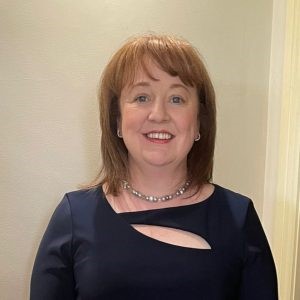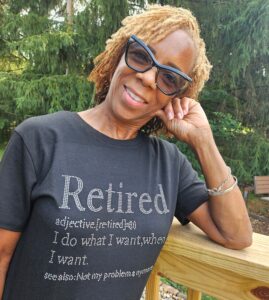
You don’t need to take Nancy Varallo’s word for it. We have heard from several of the A to Z program leaders about their experiences.
“It is my very strong opinion that this program is the key and the missing link to the shortage of students in our schools. I believe our Steno A to Z students will be strong, successful students who start way ahead of the game. Whatever needs to be done to expand the number of attendees needs to be done. It is purely a numbers game. Only a percentage will go on, so the higher number of people that participate, the better,” says Meredith Bonn, RPR, who is an official in Rochester, N.Y., and was recently installed on NCRA’s Board of Directors.
Bonn has taught three groups of trainees, about 25 people, so far. “The one high school student I have had so far, who is a musician, was able to learn it the quickest and fastest,” she says.
“Two out of our seven participants have now enrolled in accredited court reporting programs in Wisconsin! Another person is very seriously looking into signing up for fall classes,” says Lori Baldauf, RMR, an official reporter based in Appleton, Wis. “All seven students arrived on time and attended each class — with just a couple excused absences — and obviously worked hard to learn the material.”
“I think this A to Z program is one of the best projects NCRA has shared with its members and I’m grateful to have had this opportunity to lead a group in the Fox River Valley area of Wisconsin,” continues Baldauf. “I’d like to personally urge other reporters across the country to get more sessions started in their area as well!”
Kathy May, RPR, a freelancer and agency owner based in Memphis, Tenn., has only just begun recruiting trainees but considers what they have accomplished so far a success. “We set up a booth at our court reporting conference in June promoting the program, and from that we received donations of paper as well as the offer to loan machines,” says May. “We even had a reporter express an interest in putting together a program for her market.”
When asked for advice for other program leaders, Baldauf says: “Simply share your enthusiasm and sincere adoration for your profession! It’s contagious and will motivate your students to succeed in the program.”
“Set the expectations for the participants so they understand they cannot miss a week with lots of notice before they begin and so they can plan. Make-up sessions are too difficult and time-consuming,” says Bonn.
“Surround yourself with great reporters to help,” says Lois McFadden, RDR, CRR, an official from Marlton, N.J. “The volunteers who helped were so great. They really committed themselves to the program, and other reporters jumped in to fill in for vacations. Without the support and commitment of the instructors and the reporting firm that lent us office space, it would not have been possible.”
Rivka Teich, RMR, a freelancer based in Brooklyn, N.Y., says: “Accept more than the recommended 10 students, because just like real court reporting school; there is a drop-out rate. I had 12 people sign up, 10 people show up, and 4 people finish.”
“Start planting the seeds well in advance of offering the program. We have prepared flyers that are letting our markets know that there will be a free program coming soon. We have already gotten several names of people who are looking forward to the program,” says May. She adds that program leaders should understand that it’s important to talk about what you are doing and leverage the power of word of mouth. She says: “You never know who might know someone who knows someone who would be perfect for this profession. We just have to
find them!”
The Wisconsin Court Reporters Association used Facebook as one means of reaching potential participants. The organization also contacted the guidance offices of local high schools and emailed blasts to members asking them to reach out and network in their communities, according to Baldauf.
McFadden agrees that using Facebook is key but adds: “We have gotten leads from NCRA [and from] calls to our executive director. We also had success posting flyers in local courthouses.”
“Talk about A to Z with everyone! Your friends and family can be great A to Z messengers. Before your first class, practice on friends or family members. I had two high school seniors in my office for four days of immersion/mentoring/shadowing in a professional office. In addition to taking them to court to observe, they became my first A to Z students. Have fun rediscovering your early days of the wonder and newness of steno,” says May. “It’s infectious.”
RELATED:
A to Z: Recruiting the next generation
Thanks to the leaders who have already hosted A to Z programs








